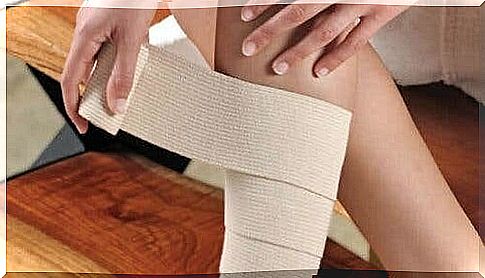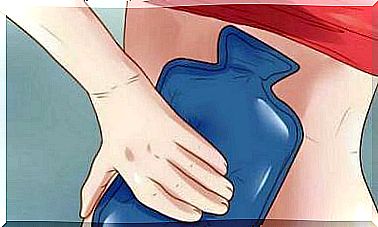Cover And Compression Bandages, Instructions For Use

The application of a cover and compression bandage is a procedure for wrapping an injured part of the body to immobilize or protect it. There are many materials suitable for this purpose. People have been using bandages for thousands of years.
- Some people think that Hippocrates, a physician of ancient Greece and the father of modern medicine, was the first person to put on a bandage to treat a venous ulcer.
- However, others argue that older civilizations, such as the Egyptians, already used them for various medicinal treatments.
Currently, most of us use them to treat our injuries and bruises. The injury may be in the muscles, such as a contracture, or a bleeding wound. In today’s article, we’ll tell you everything you need to know about cover and compression bandages.
What is the use of a cover and compression bandage?

As you know, there are different types of dressings and multiple uses for them. People often use them to protect wounds, prevent infections, or stop bleeding.
However, we can also use them to limit the movement of a limb or a joint or a sprain. In the same way, they aid in the application of splints and support a part of the body.
Compression bandages may be helpful in supporting venous circulation. This is especially helpful in people with leg edema. They also help to keep medication in place and can stop bleeding.
The Goals of Cover and Pressure Bandages
In general, we can say that relationships have three main purposes, namely the following:
- Controlling. These are used for certain treatments that require a bandage or medication.
- Compression. These are useful for compressing a limb firmly (when the goal is to stop bleeding, for example).
- Corrective. These immobilize a limb so that it can recover, as is the case with a dislocation.
What types of bandages are there?

Bandages come in all kinds of forms, depending on the purpose. Below we will list some common types of dressings and explain what they are used for.
Wrap dressings
These are for holding a dressing on one arm or one leg. To do this, the doctor wraps them around an entire limb.
Spiral bandage
This helps to keep splints in place to immobilize a hand, arm or leg. In this case, medical experts use elastic bandages around the affected limb.
Spica bandage
This is very similar to the spiral bandage. Here, doctors apply successive strips of material to the body and the first part of a limb, or the hand and a finger. So they somewhat overlap.
cross bandage
This is a specific method of applying compression bandages used to treat injuries to the hand or collarbone. A special form of cross bandage is used in the treatment of clavicle fractures.
The bandage is placed around the patient’s back and chest in a figure-eight shape and keeps the back straight by pulling the shoulders back.
T erugkerend connection
This is for bandaging the head or an amputated limb. To do this, the doctor covers an entire area from front to back with a dressing. Then he or she wraps the bandage in circles to secure the bandage.
Do cover and compression bandages pose a health hazard?
Just like any other treatment or technique, dressings can also lead to complications. This is especially true if people use them without knowing what they are doing and do not follow proper procedures and directions.
Compartment syndrome can occur, for example, if you pull a bandage too tight. This happens when the oxygen-rich blood cannot reach all parts due to the compression. The parts that remain isolated then become cold and bluish.
Bedsores or ulcers can also occur due to the use of a bandage that is too hard or due to folds in the fabric. Similarly, when the dressing covers a moist area, it sometimes happens that the skin peels off.
Conclusion
Bandages are very useful for treating all kinds of injuries, from simple wounds to broken bones. However, doctors only recommend them if they are put on by an expert who knows the procedures and can follow the instructions.









